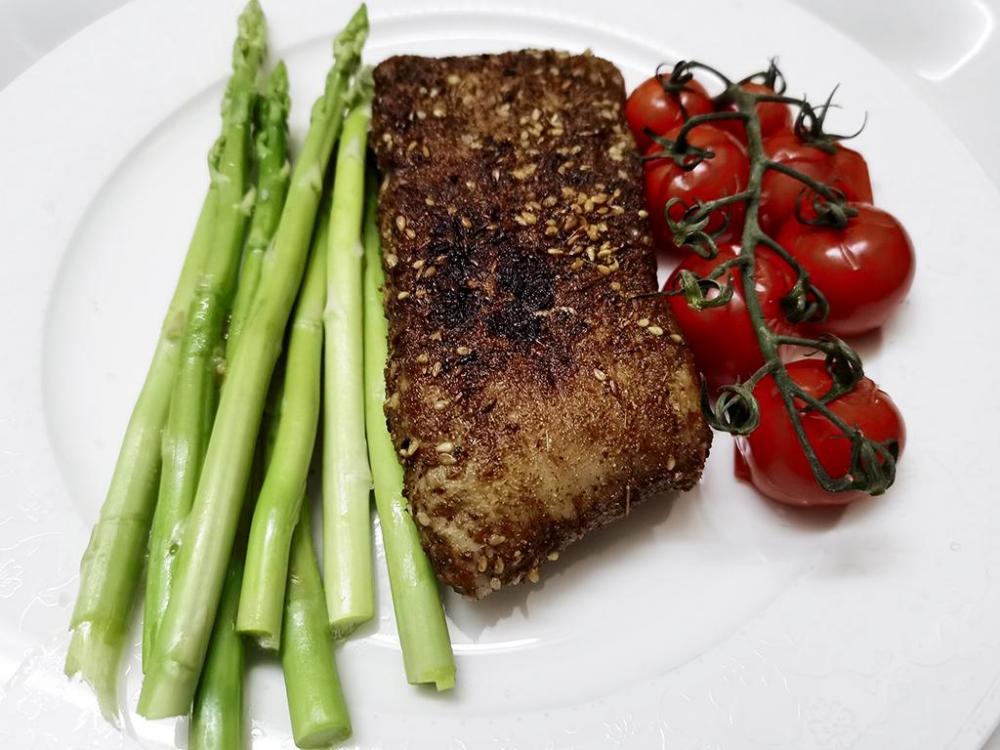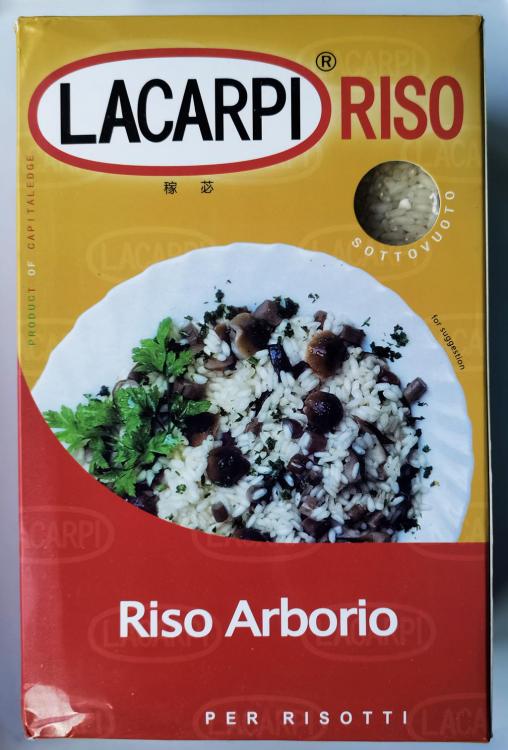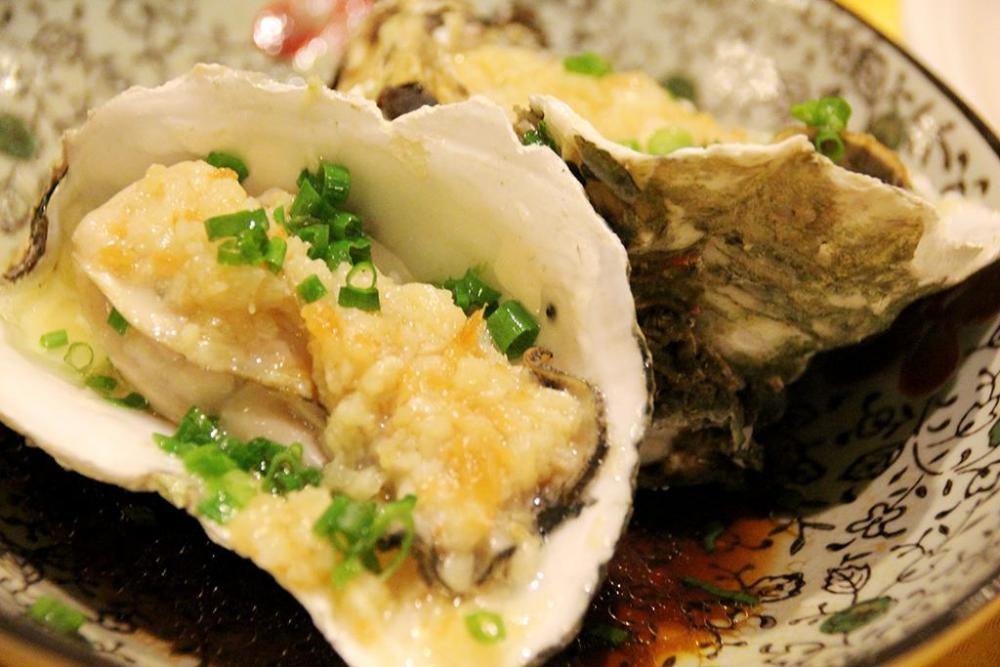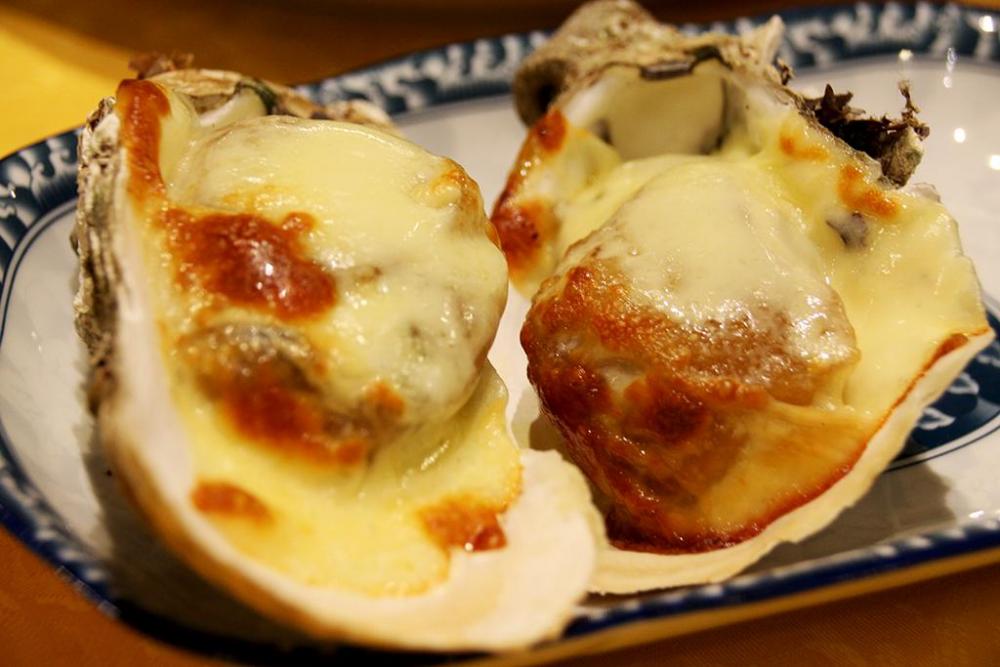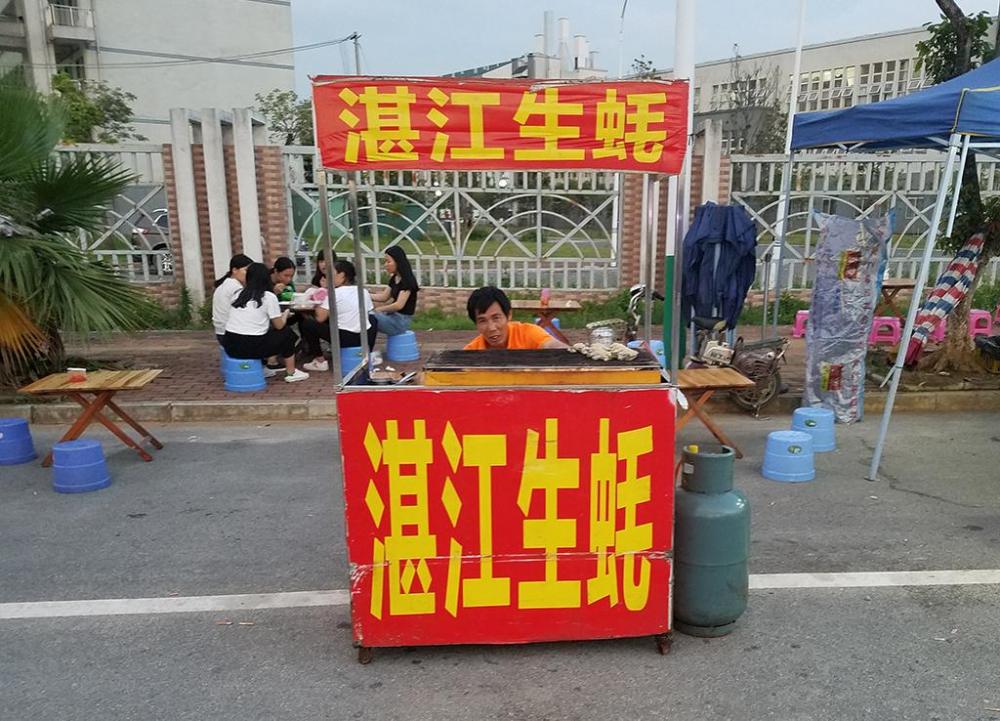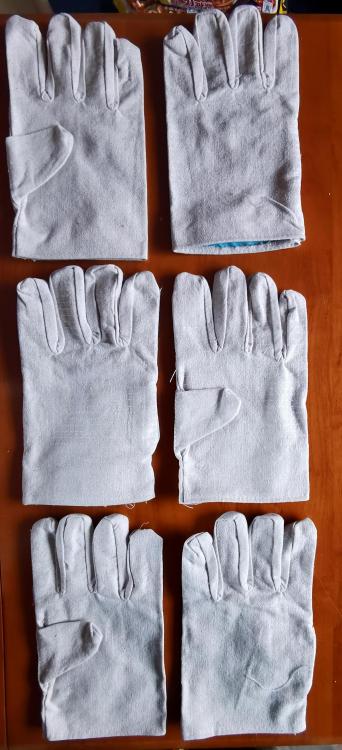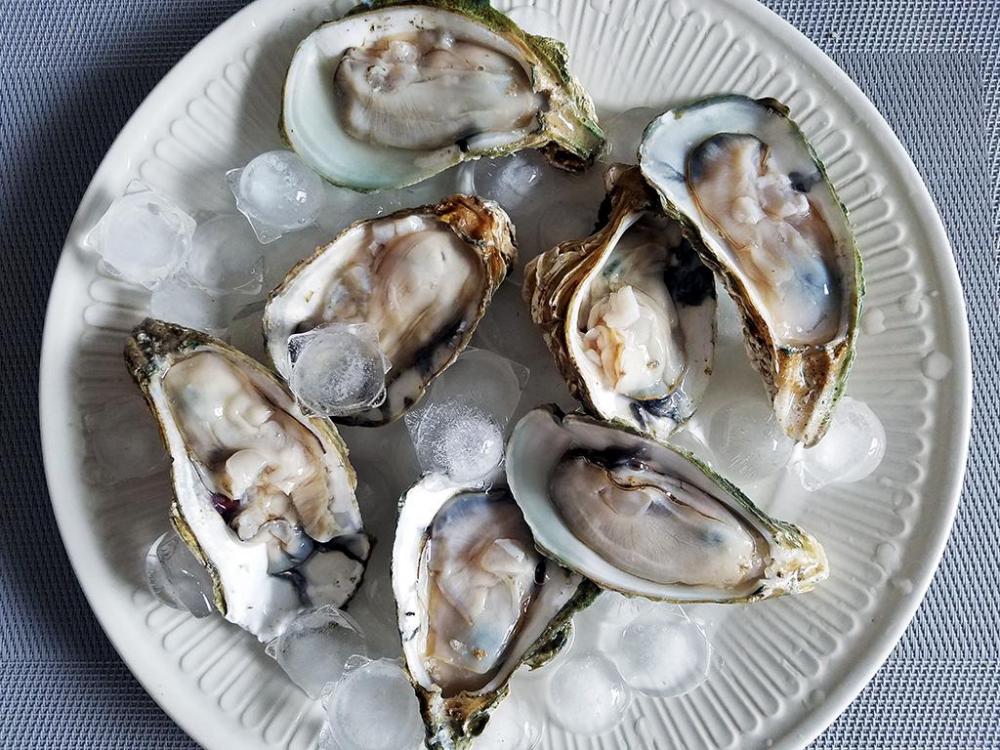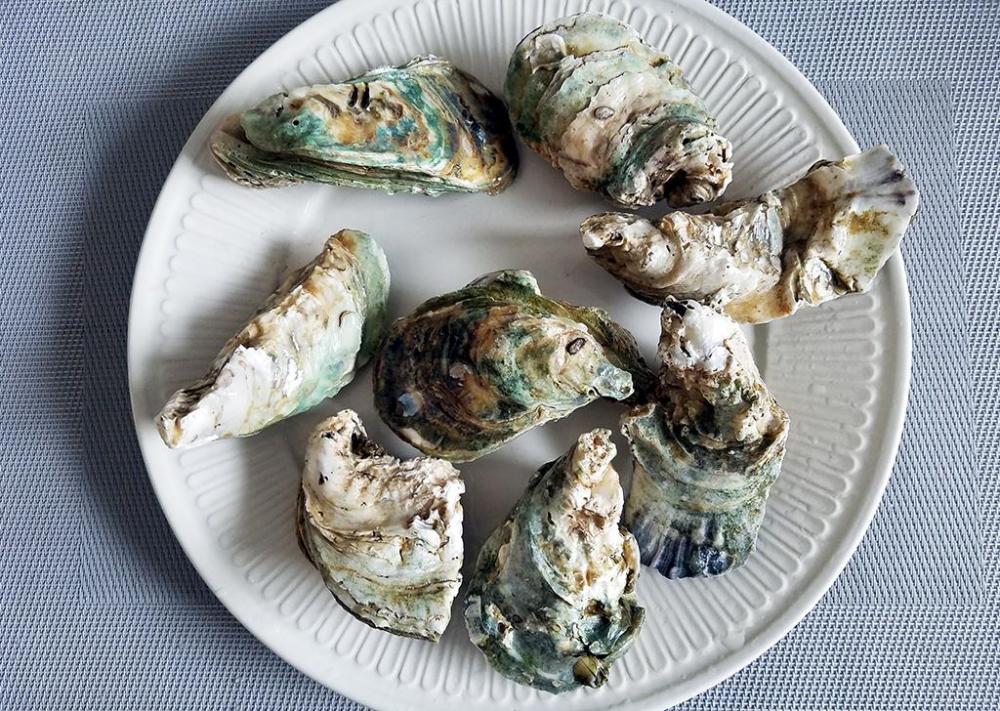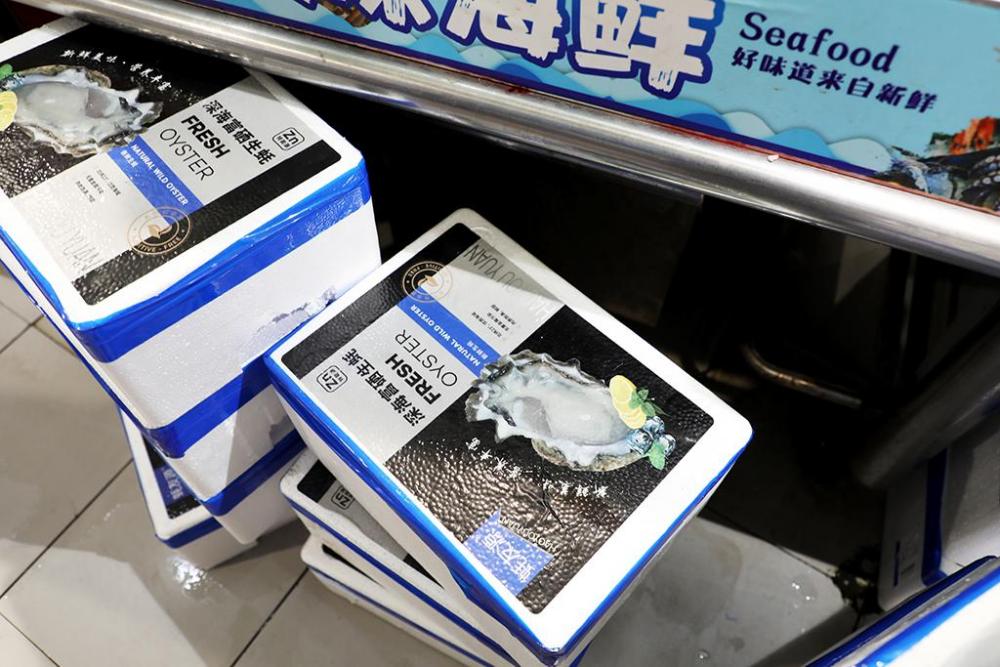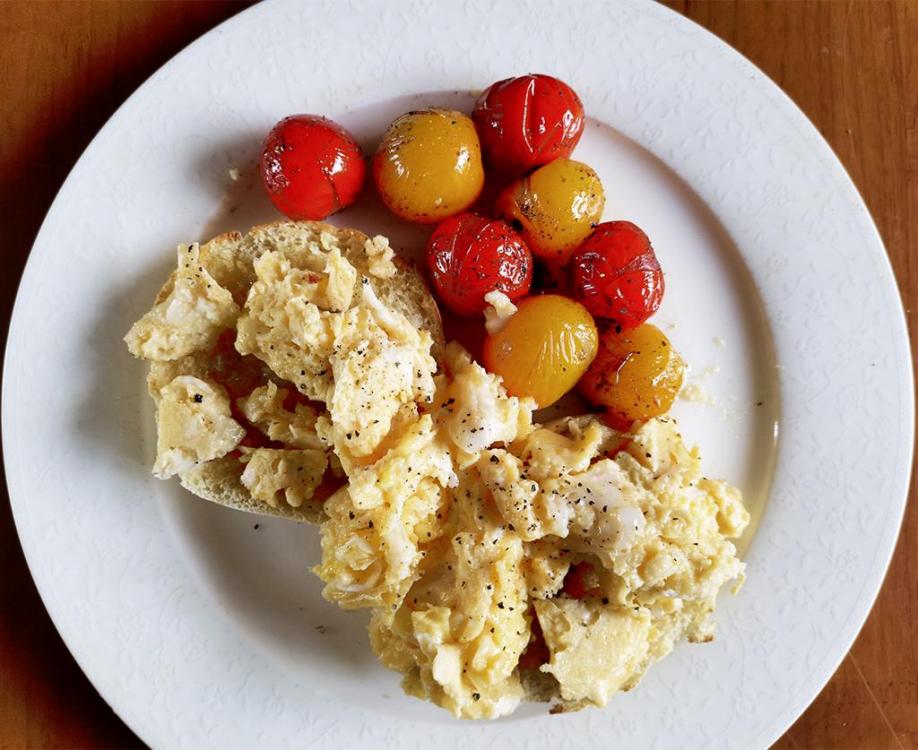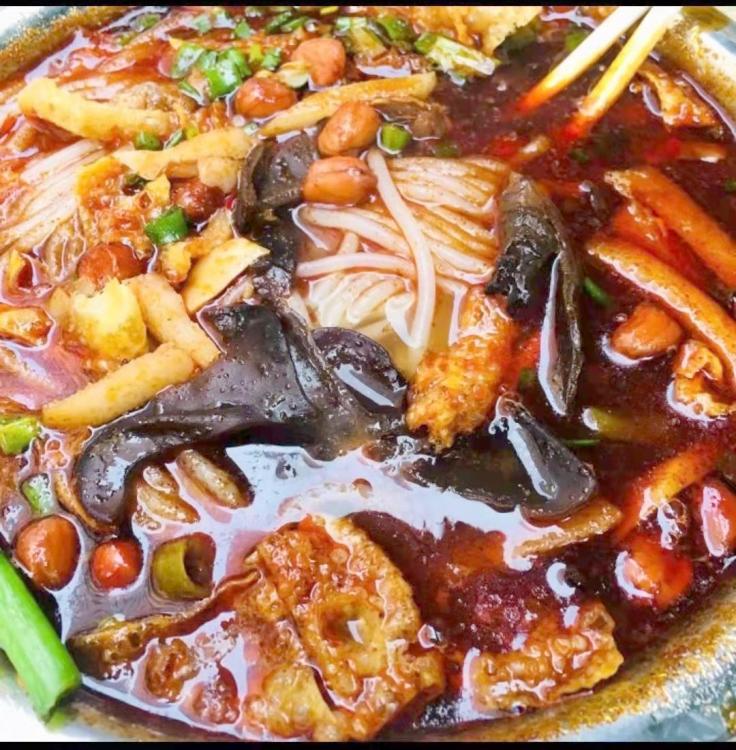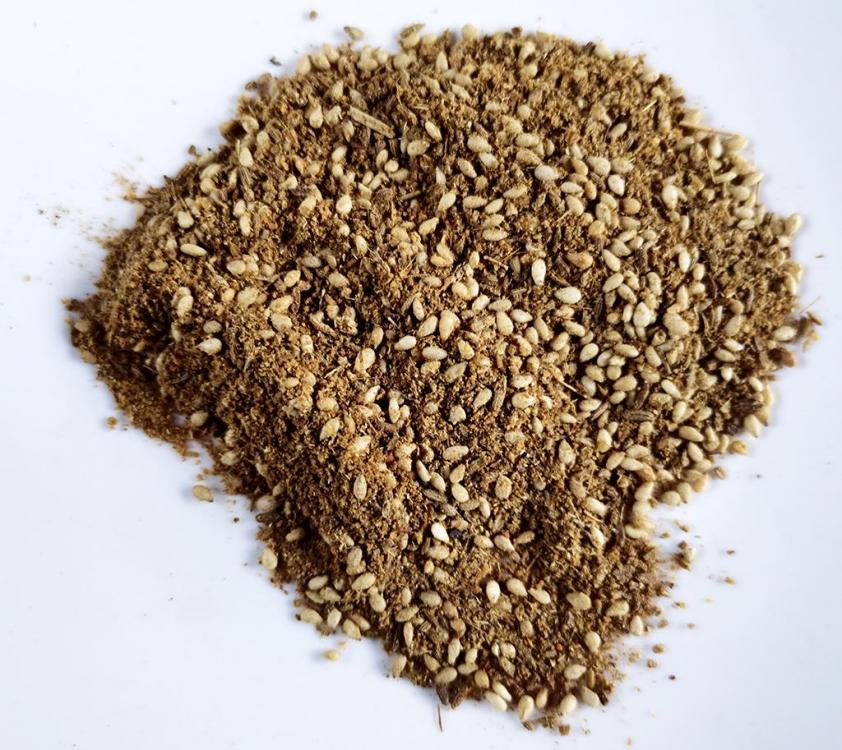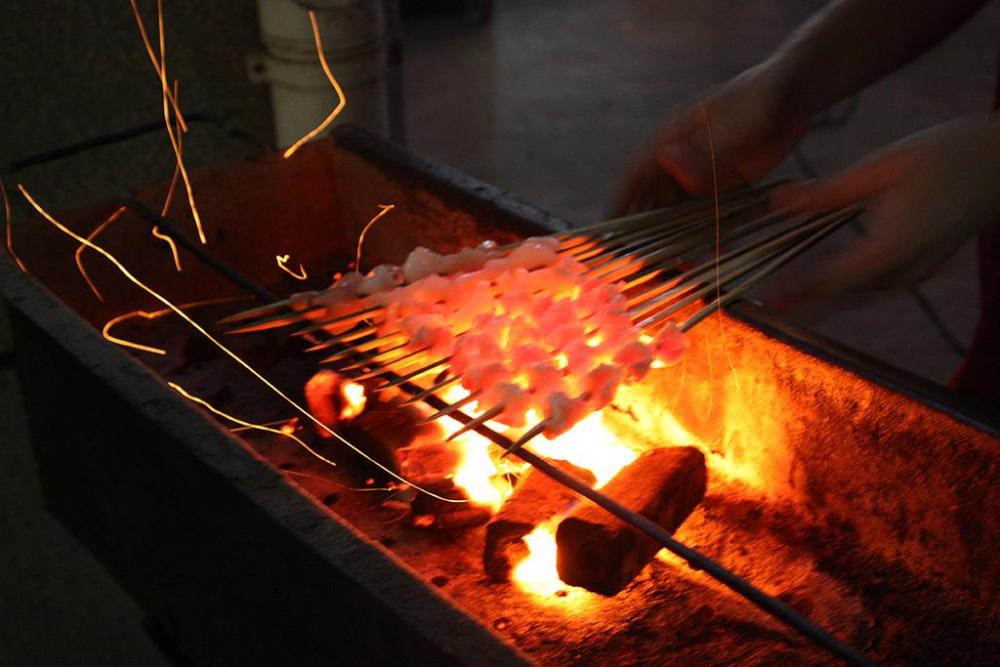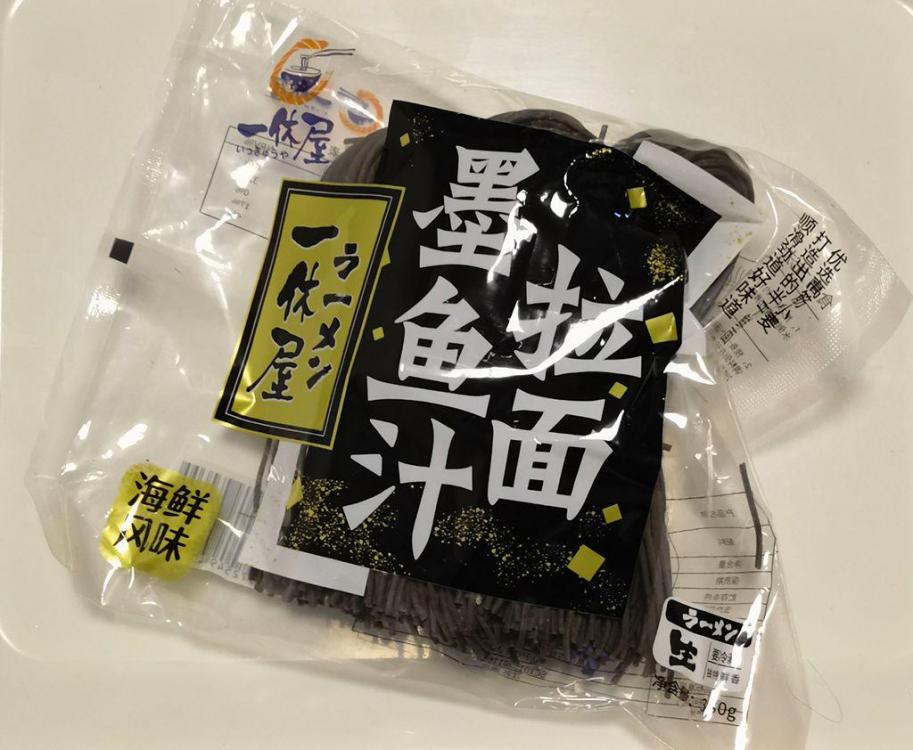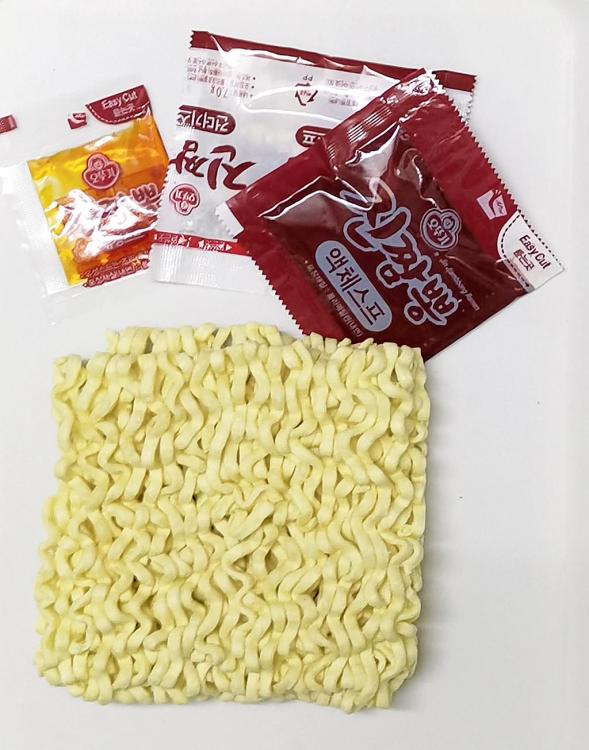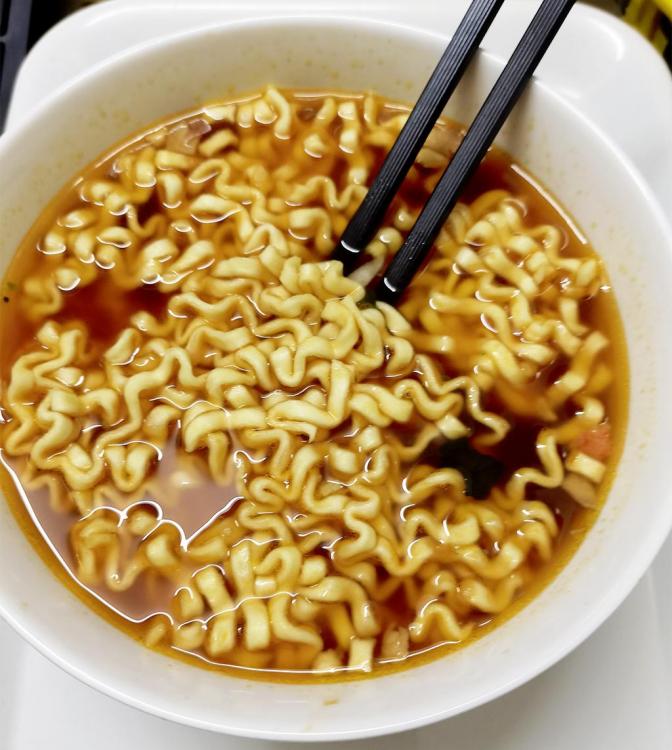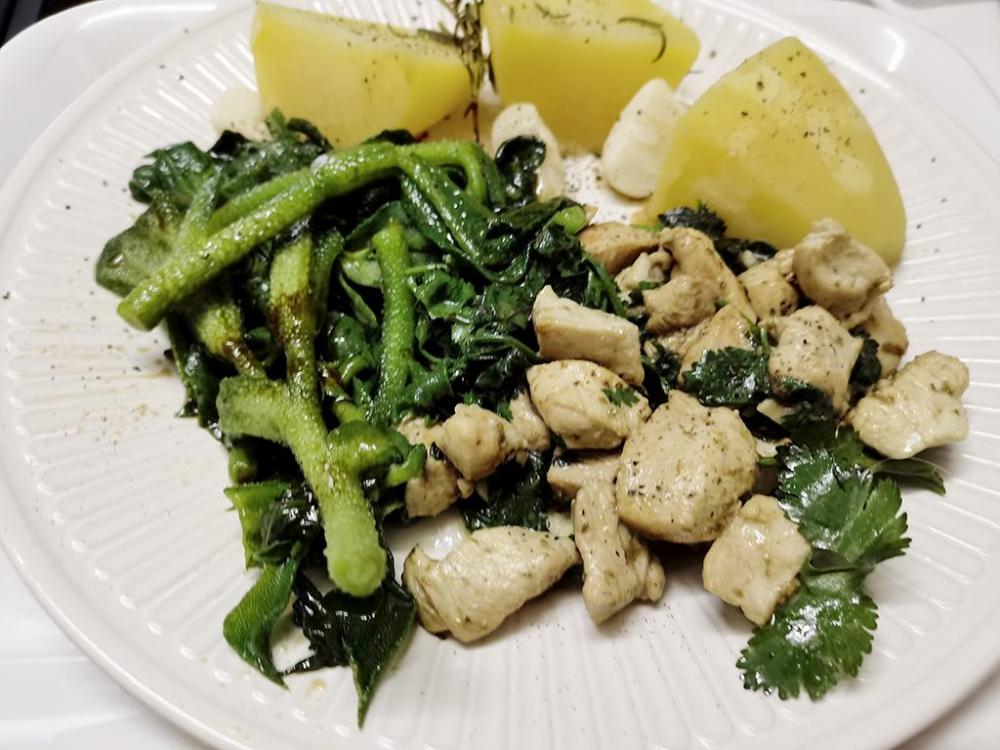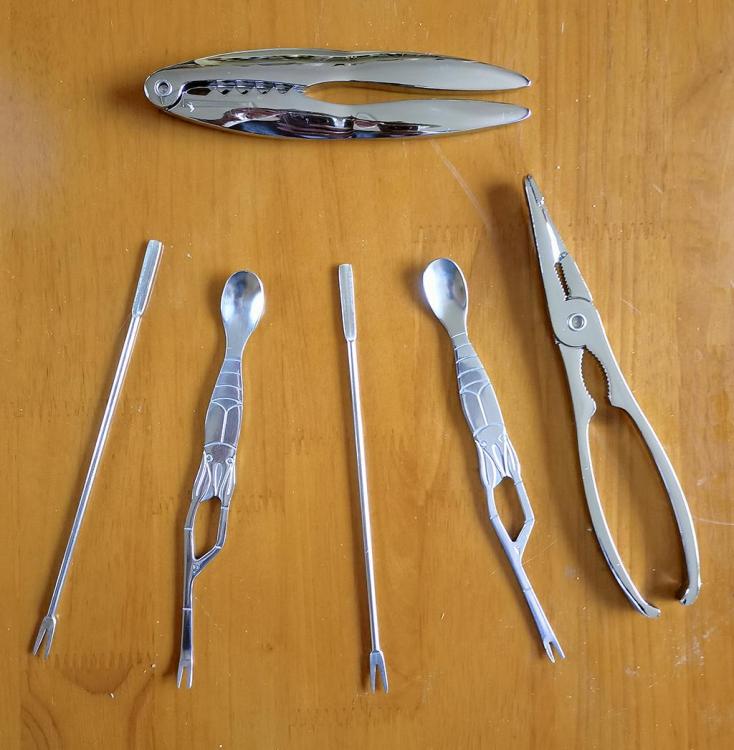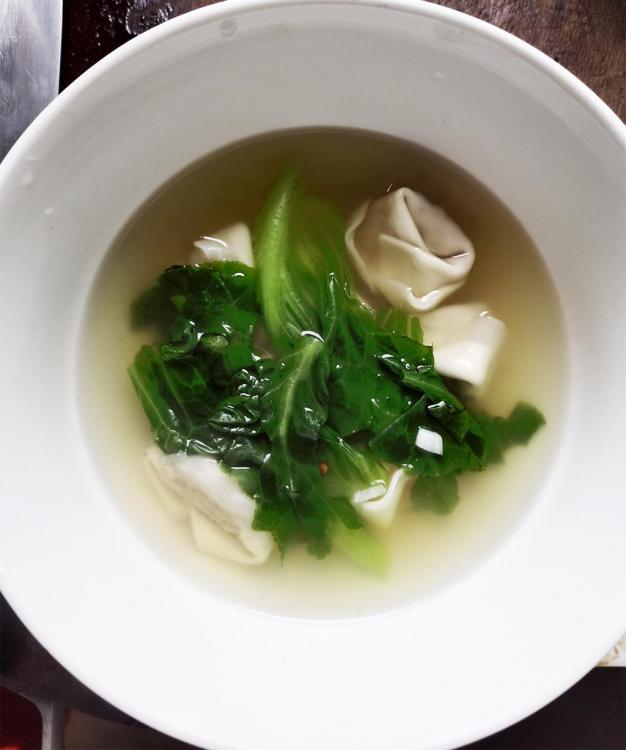-
Posts
16,658 -
Joined
-
Last visited
Content Type
Profiles
Forums
Store
Help Articles
Everything posted by liuzhou
-
Thanks everyone. Keep 'em coming. The citrus suggestion is interesting. Seafood for sure. Not sure about curried risotto. And deconstructed pizza risotto ain't happening. Sorry.
-
I would have responded to your question earlier, but it took me some time to work out the time difference. It does get confusing at times.
-
I think you really have to experiment to find what you like - each one is different. For example, I probably make mine more chilli heavy than many people. I've never really measured but I'd guess I do it with around 40% cumin, 30% chilli, 20% fennel and 10% sesame. (Dinner last night, was actually tonight. I'm 14 hours ahead of Costa Rica time.)
-
Pork tenderloin steak, dry rubbed with 烧烤料 (shāo kǎo liào), a mix of ground fennel, ground cumin, ground chilli and white sesame seeds, and fried. Quick roasted cherry tomatoes and blanched thin asparagus.
-
Yes. Many squashes available. Thanks.
-
I just grabbed me a pack of Arborio for the first time in a quarter of a century. It is imported from Italy and, as such, wasn't cheap but not ridiculous. So, now I'm thinking what to do with it. Make risotto, obviously but what kind? In the distant past, I mainly did mushroom risottos and certainly plan one of them here (my access to an innumerable variety of wild and cultivated mushrooms, fresh and dried, is huge!), but I'd like to also do something else. Anything except c@rn risotto which I've noticed some people doing on this very platform! I look forward to some inspiring ideas!
-
Yeah. They aren't bad; just not my preference.
-
Well, for a start, they never serve them raw. I have attempted several times to get oyster stalls in the street and in restaurants to bring me some and they point blank refuse to sell me them. They are convinced I will drop dead immediately if I eat one and that they'll get blamed. Only one has ever obliged me and he was very hesitant. This guy. His sign 湛江生蚝 (zhàn jiāng shēng háo) translates as "Zhanjiang Oysters", Zhanjiang being a city/prefecture in the south-west of Guangdong Province and on the Tonkin Gulf. I was with three young students I know from the university behind him. One of them bravely agreed to try one after she saw me eat a few and remain alive. She was clearly very nervous, though. Her friends weren't going there, at all! What the guy sells is grilled oysters. This is the most common preparation. The oysters are grilled over charcoal and drenched in a sauce of minced garlic and served. They are also served this way in more formal restaurants. I can eat those, but much prefer them au naturel. In recent years, I've also seen these monstrosities below in a couple of places. Restaurants rather then street stalls. They are again grilled but finished off with a Chinese version of American cheese melted over them! Disgusting. The particular example above was in a restaurant in Guangzhou, but I've seen them here in Liuzhou, too. So, I very seldom eat oysters other than at home. Always raw and usually just with some lemon juice. Soy sauce with citrus (ponzu) works well, too, I find.
-
I decided to buy these "Double-layer thick canvas gloves lined with 24-wire protection". I really only wanted one glove, but the minimum order was for three pairs. But they were cheap, so I bit. I only ever use these types of glove when shucking oysters. And I only need one to hold the oyster while using my oyster knife in my ungloved right hand. I really enjoy shucking! Somehow I convinced myself that I had ordered three gloves rather than pairs, so when the delivery came yesterday I was momentarily surprised to find six! Duh! Brain fart! I usually buy these wild oysters in boxes of 20 - 25 depending on size. They cost me between ¥3.2 and ¥4 per oyster; that's $0.50 to $0.62 USD per oyster. If anyone needs some of said gloves, just drop in next time you are passing and pick one up. Or even a pair!
-
Two duck eggs, scrambled with loads of butter. Served over buttered toasted muffins. Bi-coloured cherry tomatoes fried in yes, butter.
-
-
43. 烧烤料 – (shāo kǎo liào) – Barbecue Spicing Another important spice mix turned up today. This is a mix of ground fennel, ground cumin, ground chilli and white sesame seeds. It is mainly used on the ubiquitous 肉串 (ròu chuàn) stands on every night market across China. Originating in Xinjiang province these are usually fatty lamb meat kebabs/kebobs grilled over charcoal, although other meats and offal may also appear. The spicing is liberally sprinkled over the meat as it cooks. I normally make my own mix, but I've used this one before and the relatve proportions of the mix are similar to how I would do it. Some others I find are unbalanced.
-
Squid with skinny asparagus, garlic, galangal, chilli, oyster sauce, nam pla, lime juice, Chinese chives. Served with orzo.
-
I also have some "Japanese" black cuttlefish ink ramen noodles. Made in China. No bags of bits. Just the noodles. They will, no doubt, soon make an appearance in a dinner or lunch topic.
-
A couple of days ago I took delivery of these Korean seafood ramen noodles. I have eight packets because that was the minimum order. I seldom eat instant anything, but like to have some in the pantry for emergencies. I ate one bag to sample them. The noodles themselves were very nice. Still al dente (or however you say that in Korean). The soup was very spicy (not a bad thing), but the seafood and vegetable bag was a big disappointment. Two microscopic bits of unidentifiable seafood (probably surimi) and about half a teapoon of minced carrot and seaweed, I think. Definitely another time to forget the supplied extras and just make something with the noodles.
-
Coincidentally, this link popped up on Twitter, this moning. Plant of the Month: The Pawpaw
-
Chicken with the usual garlic and ginger, along with white wine, capers and olive oil. Balcony rosemary and garlic boiled potatoes. Stir fried iceplant with oyster sauce.
-
it's multi-functiomal.
-
You might not consider this fun stuff, but I've been looking for these for a long time and I'm going to have fun using them. Yes, I had similar implements back in London, but just found them here in China. All I need now is some crustaceans to torture.
-
三鲜馄饨 (sān xiān hún tun) - three flavour wontons (pork, shrimp, shiitake) in chicken broth with garlic, ginger, chilli flakes and lettuce.
-
-
Yes, I got that, but it still seems funny the way they worded it.





